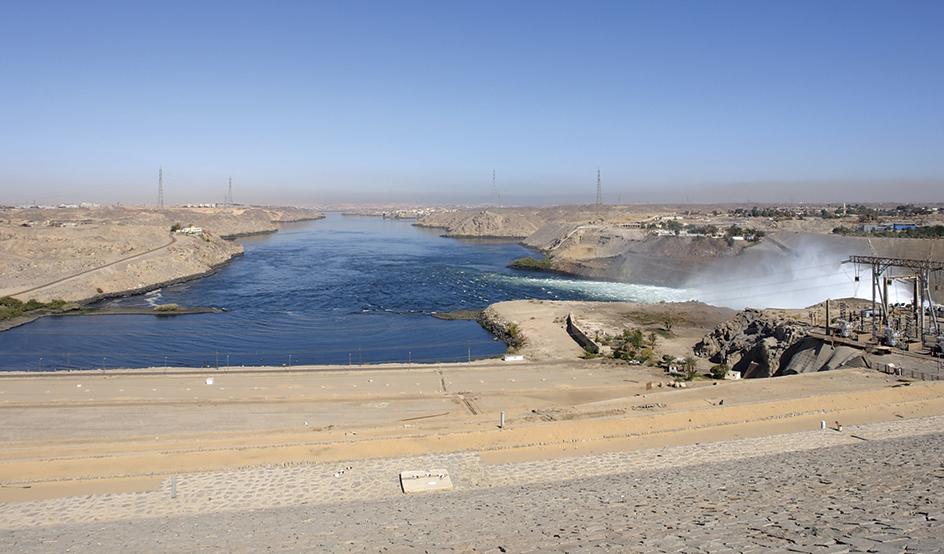Aswan << AS wahn or ahs WAHN, >> High Dam, on the Nile River in southeastern Egypt, ranks as one of the largest rock-fill dams in the world. Rock-fill dams consist of coarse rocks and boulders. The rocks and boulders are often sealed with a watertight coating—in this case, clay. The dam measures 364 feet (111 meters) high and about 2 1/3 miles (3.7 kilometers) long. It lies south of the city of Aswan, on the northern shore of Lake Nasser. When the dam was built, it formed the lake. The lake extends about 300 miles (500 kilometers) from the dam into Sudan.
The Aswan High Dam provides flood control, hydroelectric power, and water for irrigation. Since its construction, the dam has protected most of Egypt’s population against the floodwaters of the Nile. The dam has a generating capacity of about 2.1 million kilowatts. It supplies about 15 percent of Egypt’s electric power. The dam also has increased the amount of irrigated land in Egypt. It thus enabled the country to double its agricultural production.

While the dam has created many advantages, its operation has also caused significant harm. For thousands of years, silt (fine-grained particles) deposited by floodwaters had fertilized farmland along the Nile. Today, the dam prevents the water from spreading silt over the land. As a result, farmers must enrich the soil with expensive chemical fertilizers. The absence of silt also has increased the erosion (wearing away) of land along the Mediterranean coast near the Nile. In addition, the dam has hindered drainage in nearby soils. Scientists have blamed the dam for an increase in a disease called schistosomiasis, which causes intestinal and urinary infections. Microscopic worms that cause the disease breed in snails living in the Nile and its canals. The filling of Lake Nasser also displaced many people from their homes and flooded many ancient churches and temples.
Construction of the dam began in 1960 and cost about $1 billion. The dam began operating in 1968. The Soviet Union provided technical assistance and more than $300 million in loans for the project. The dam largely replaced the smaller Aswan Dam, which stands nearby and is used chiefly to generate electricity.
